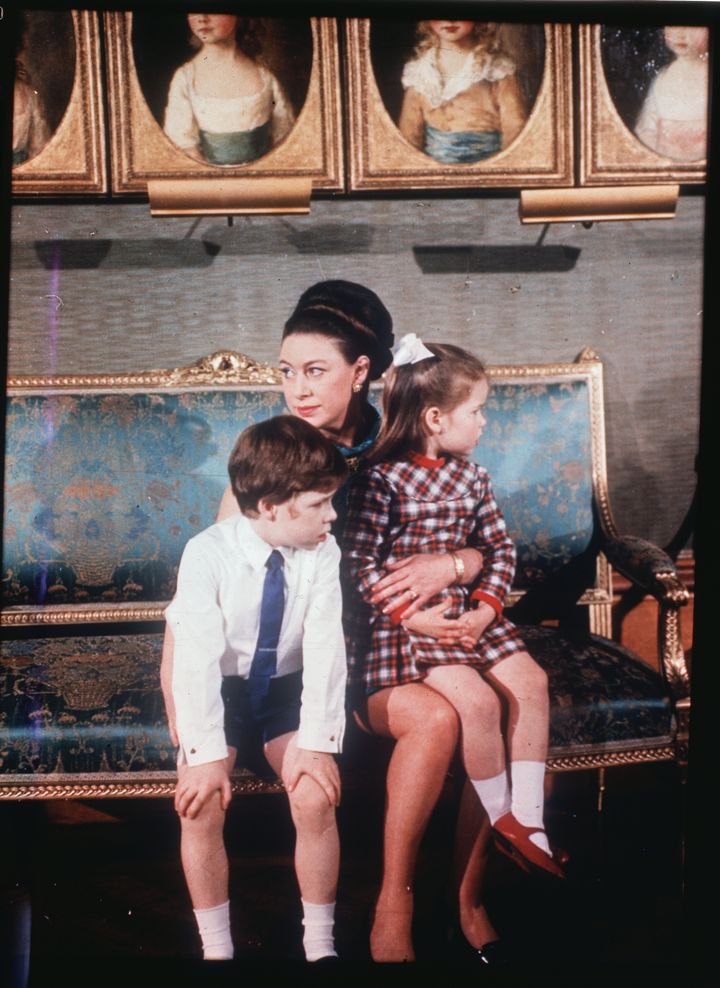A royal documentary relegated to the archives nearly 50 years ago briefly resurfaced last week, creating a stir among royal watchers and experts.
The 90-minute film, called “Royal Family,” trailed senior members of the British royal family in 1968 and 1969. It aired on ITV and BBC in 1969, but the queen was reportedly so displeased that it was taken off the air for good in the ’70s.
Every so often, a pirated copy pops up on YouTube, which happened last week before it was taken down on Friday due to copyright claims. HuffPost was able to view the documentary and summarise some of its most revealing moments, including scenes featuring a horse eating carrots from a white napkin and a young Prince Charles and Princess Anne dangling over the ocean during risky naval exercises on the royal yacht.
We also wanted to get the views of royal experts and historians, so we reached out to Carolyn Harris, who runs royalhistorian.com and wrote “Raising Royalty: 1000 Years of Royal Parenting,” and Seth Leonard, a royal historian who is a writer and editor at Eurohistory/European Royal History Journal.

“Living in the present day and having watched dozens of royal documentaries, I must say that ‘Royal Family’ was very tame,” Leonard said, though he added that he found it “shocking” to see “the queen speaking her own mind, off the cuff.”
“The public normally only hears her majesty’s voice when she is delivering a speech, whether at the state opening of Parliament or at Christmas or on extremely special occasions,” Leonard said. Documentary viewers, he added, get an unusual chance to hear “so much from a woman who is normally extremely dedicated to guaranteeing that her inner thoughts remain private.”
Leonard said he found it “terribly curious” that the documentary devoted so much time to showing the royal family’s wealth, including “the horses and ceremonial carriages, the vintage vehicles, the silver and gold collections, the art collection, all of the staff — not to mention the residences.”
“One imagines that in the late 1960s this televised display of wealth might not have been terribly wise from a public relations perspective, given the state of the British economy at that time,” Leonard said.
Harris said she found the film’s “coverage of the 1968 South American tour of Brazil and Chile fascinating.”
“The documentary depicts the public engagements, but also moments behind the scenes, such as the queen reviewing the press coverage in the local Brazilian newspapers and wishing that she could speak Portuguese,” Harris said.

Harris and Leonard both said they found the focus on the royal children personal and unexpected.
“I was surprised by the amount of screen time devoted to the royal children, including royal children who are not well known public figures today,” Harris said, referring to moments like Princess Margaret and Lord Snowdon’s children commenting on royal art, and Prince Edward and Prince Andrew participating in a snowball fight. Harris said cameras wouldn’t likely have that kind of access today.
“Today, William and Catherine, the Duke and Duchess of Cambridge, are very protective of their children’s privacy,” Harris said. “It’s unlikely that a program would be made with so many scenes of royal children playing together and expressing themselves spontaneously in front of the cameras.”
Leonard said parts of the documentary felt like “watching someone else’s home movies.”
“The scenes of the queen and Prince Philip with their youngest child, Prince Edward, who was 5 years old when the documentary came out, were particularly tender to watch,” Leonard said.
“We saw little Prince Edward yelling at his father to ‘Get in!’ to the canoe so that they could ride around the lake at Balmoral, with Prince Philip replying ‘Coming,’” he said.
“We watched the queen drive Prince Edward into town and the two stopping in a local shop, where Queen Elizabeth buys her son an ice cream,” he added.
That scene, Leonard said, gives viewers tremendous insight into the queen as a mother. “Once they are back at their car, she gently chides him that he is going to make a mess, but then she giggles at how happy he is with his treat,” Leonard said.

Leonard and Harris both said the documentary did an excellent job showing royal family members’ devotion to their responsibilities.
“The role of a senior member of the royal family is presented as a full-time career and the amount of preparation required by both the royal family and their household for public engagements is evident,” Harris said.
“The queen takes a close interest in her public image throughout the program and viewers see her making wardrobe and jewellery selections before major events,” Harris said. ”The queen and Prince Philip are also shown working in their offices,” she noted, and a Christmas gathering at Sandringham is referred to as an “office party” for members of “the firm.”
The film also nods to the queen’s work ethic, with camera shots showing the “eternal presence of the ‘red boxes,’” the containers that hold government papers sent to the queen every day for her review, Leonard said.
Against the backdrop of the world as it was a half-century ago, the documentary is especially remarkable, the experts said.
“Today, the public is accustomed to hearing news about the personal lives of royalty,” Harris said. “The 1969 documentary emphasises that audiences have only seen the royal family at public engagements and that this program is a first glimpse behind closed doors. The fact that the public is being let into the royal family’s private sphere is emphasised repeatedly throughout the program.”
And there hasn’t been access to the royal family’s private sphere quite like this since.
We may gain revealing insight into the modern royal family from Prince Harry and Meghan Markle’s upcoming Netflix programmes. But until then, keep checking YouTube for pirated copies of “Royal Family.”
Subscribe to HuffPost’s Watching the Royals newsletter for all things Windsor (and beyond).